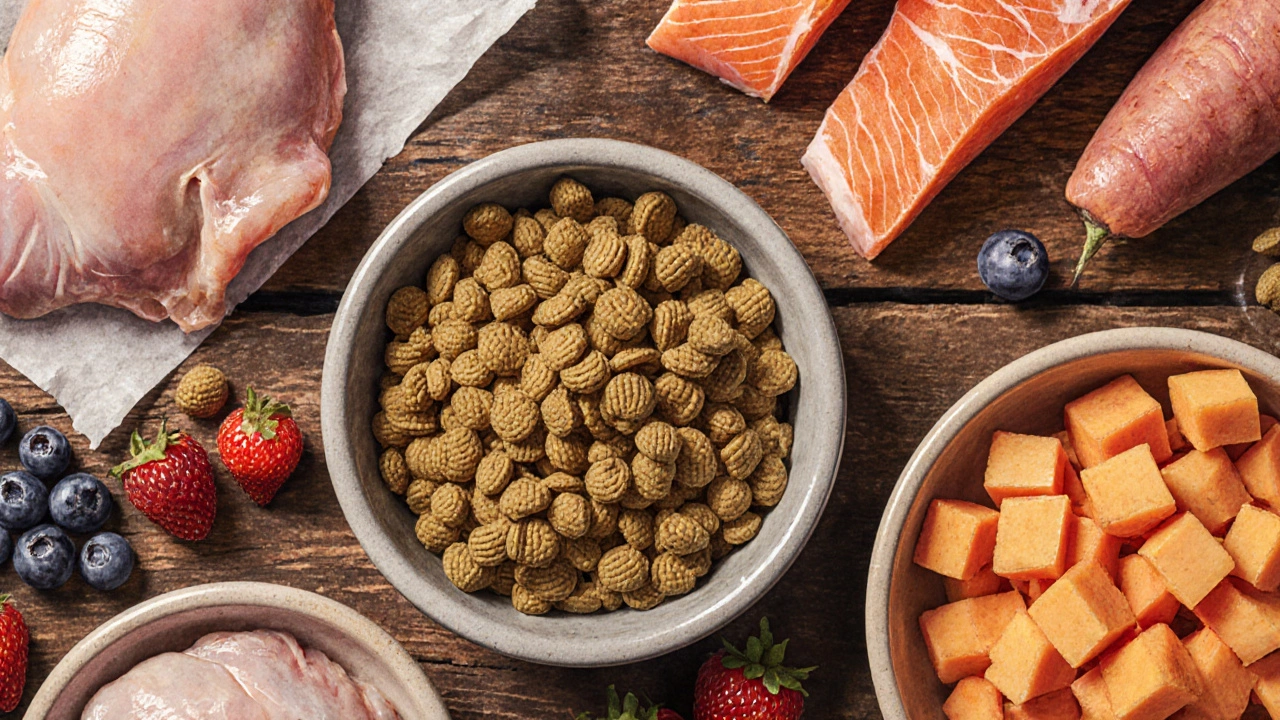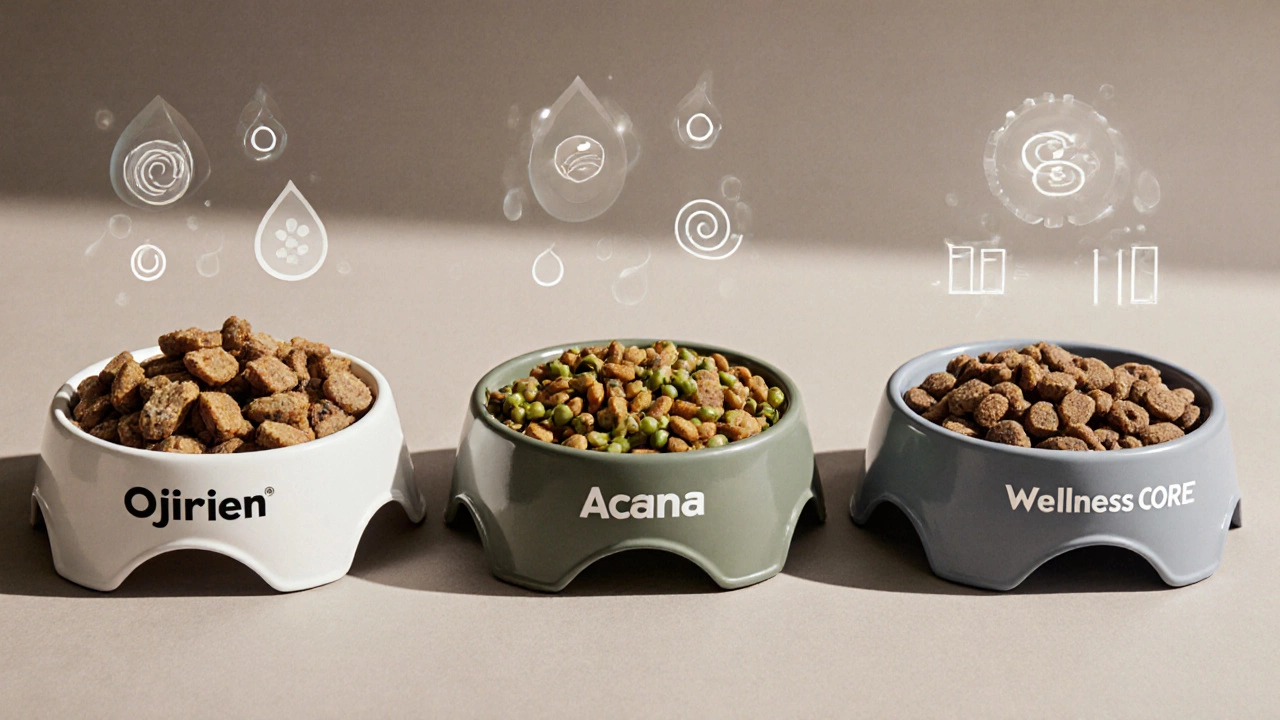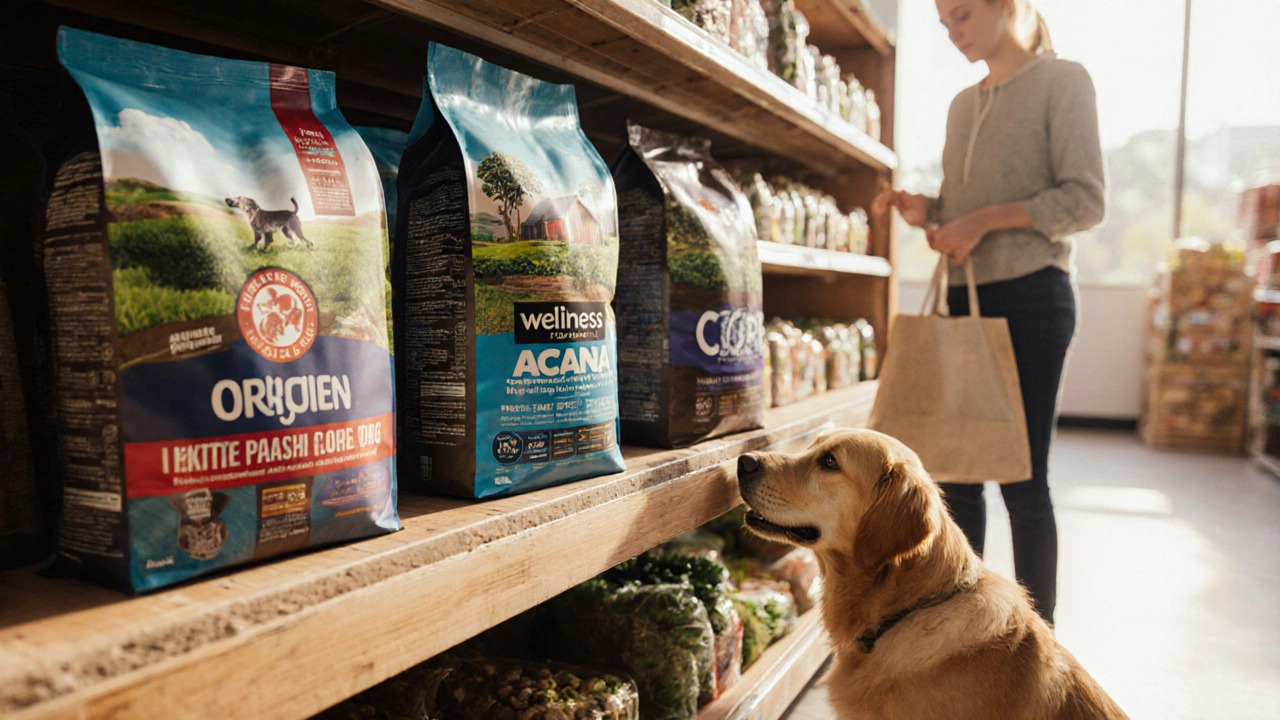Dog Food Selector Tool
Select Your Dog's Characteristics
This tool recommends the best dog food brand based on your dog's specific needs.
Quick Takeaways
- Orijen leads with 85% fresh meat protein, ideal for active adult dogs.
- Acana offers a regional ingredient approach at a mid‑range price point.
- Wellness CORE provides a grain‑free, probiotic‑rich formula perfect for sensitive stomachs.
- All three meet AAFCO standards, include omega fatty acids, and are widely available in NewZealand.
- Choose based on life stage, activity level, and any dietary sensitivities.
Finding the top dog food brands can feel overwhelming with endless options on supermarket shelves and online stores. This guide narrows the field to three standout names, explains why they earn the top spot, and gives you a side‑by‑side comparison so you can pick the perfect bowl for your furry friend.
How We Picked the Winners
We set up a transparent scoring system that mirrors what most pet parents care about:
- Protein quality and quantity - real meat vs. meat meals.
- Ingredient transparency - can you trace the source?
- Life‑stage suitability - puppy, adult, senior formulas.
- Specialty nutrients - omega‑3/6, probiotics, glucosamine.
- Price per kilogram - realistic for NZ budgets.
- AAFCO compliance - meets the official nutrition standards.
Each brand was scored on a 0‑10 scale for every criterion, then weighted to reflect the most critical factors (protein and AAFCO compliance together made up 40% of the total). The three highest aggregate scores became our top three.
Brand #1: Orijen
Orijen is a premium Canadian brand that markets its dry kibble as "biologically appropriate" for dogs. Its flagship formula, Original, packs 85% fresh, regionally sourced meat, poultry, and fish, with the remaining 15% made up of low‑glycemic fruits and vegetables.
Key attributes:
- Protein: 38% minimum, derived from whole chicken, turkey, and wild‑caught fish.
- Grain content: Free - uses low‑carb tubers like sweet potato.
- Omega fatty acids: EPA/DHA from fish oil, supporting skin, coat, and brain health.
- Probiotics: Not added, but the high meat content naturally encourages a healthy gut flora.
- Price: NZ$9.90 per kilogram (approx.) - higher than average but justified by ingredient quality.
Why it excels: The protein ratio mirrors a wild‑type diet, which active adult dogs love. Orijen also publishes a clear sourcing map, showing farms in British Columbia and Atlantic Canada.

Brand #2: Acana
Acana is the sister brand to Orijen, offering a similar “regionally inspired” philosophy at a more accessible price. Its Grasslands line features 30% fresh meat, 30% meat meals, and a blend of legumes, fruits, and vegetables.
Key attributes:
- Protein: 30% minimum, sourced from free‑range chicken and duck.
- Grain content: Low‑grain; includes pea protein and lentils.
- Omega fatty acids: Flaxseed and fish oil provide a balanced EPA/DHA profile.
- Probiotics: Added Enterococcus faecium to aid digestion.
- Price: NZ$6.30 per kilogram - a sweet spot for families on a budget.
Why it ranks high: Acana balances quality and cost, making it a practical choice for multi‑dog households. The regional ingredient map includes farms in the Pacific Northwest, giving NewZealand owners confidence in the supply chain.
Brand #3: Wellness CORE
Wellness CORE is an American brand that built its reputation on grain‑free, protein‑rich formulas with added superfoods. The Original Grain‑Free recipe delivers 34% high‑quality protein sourced from turkey and chicken, plus a probiotic blend.
Key attributes:
- Protein: 34% minimum, from deboned turkey and chicken.
- Grain content: 0% - uses sweet potato and peas for carbs.
- Omega fatty acids: Salmon oil for DHA/EPA.
- Probiotics: Bacillus coagulans and Lactobacillus acidophilus to support gut health.
- Price: NZ$7.80 per kilogram - sits between Orijen and Acana.
Why it matters: Dogs with grain sensitivities or skin issues often thrive on Wellness CORE, thanks to its combination of omega‑rich fish oil and a patented probiotic system.
Side‑by‑Side Comparison
| Attribute | Orijen | Acana | Wellness CORE |
|---|---|---|---|
| Protein % (minimum) | 38% | 30% | 34% |
| Fresh meat portion | 85% of total ingredients | 30% fresh, 30% meat meals | Deboned turkey & chicken |
| Grain‑Free | Yes | Low‑grain (peas, lentils) | Yes |
| Omega‑3/6 sources | Fish oil, flaxseed | Flaxseed, fish oil | Salmon oil |
| Probiotic blend | None added (high meat) | Enterococcus faecium | Bacillus coagulans + L. acidophilus |
| AAFCO certified | Yes (All life stages) | Yes (Adult & Senior) | Yes (Adult) |
| NZ price/kg | ~NZ$9.90 | ~NZ$6.30 | ~NZ$7.80 |

Which Brand Fits Your Dog?
Puppies (8‑12 weeks): Look for formulas with DHA for brain development. While Orijen offers a puppy‑specific line, Acana’s Puppy & Junior and Wellness CORE’s Puppy are also solid. If cost is a concern, Acana gives a good DHA boost via fish meals.
Active adults (working dogs, agility competitors): Orijen’s high protein and minimal carbs fuel stamina. Pair it with a joint supplement if your dog has heavy wear.
Senior dogs (7+years): Acana’s senior formulas lower phosphorus and add glucosamine. Wellness CORE’s grain‑free option can ease arthritis when combined with a omega‑rich chew.
Dogs with grain sensitivities or skin allergies: Wellness CORE shines thanks to its probiotic blend and pure fish oil. Orijen can also work if your dog tolerates the low‑glycemic tubers.
Where to Buy in NewZealand
All three brands are stocked by major pet‑supply chains like Animates, Petstock, and The Warehouse. Online retailers such as Mighty Ape and Pet Circle often run discounts on bulk orders (6‑month supply). If you prefer a local shop, ask the store staff to show the product’s AAFCO statement - a quick way to verify authenticity.
How to Transition Safely
- Start with 25% new food mixed with 75% current food for 2‑3 days.
- Increase the new food to 50% for another 3‑4 days.
- Move to 75% new food for a week, then 100%.
- Watch stool consistency; adjust water intake if the new kibble is drier.
Gradual transitions prevent gastrointestinal upset and let you spot any adverse reactions early.
Frequently Asked Questions
Are grain‑free dog foods safer for all breeds?
Grain‑free diets benefit dogs with specific grain intolerances, but they aren’t universally superior. Recent studies link some grain‑free formulas to dilated cardiomyopathy (DCM) in certain large breeds. Always check the ingredient list for novel protein sources and discuss any major diet change with your vet.
How much protein does a healthy adult dog need?
AAFCO recommends a minimum of 18% protein for adult maintenance, but most active dogs thrive on 25‑30% or higher. Premium brands like Orijen push 38% to match the protein density of a meat‑based ancestral diet.
Can I feed my dog the same food throughout life?
You can, provided the formula is labelled "All Life Stages" and meets the nutritional needs of puppies, adults, and seniors. However, many owners switch to senior‑specific kibble after age 7 to lower calories and add joint support.
What’s the best way to store dry dog food?
Keep the bag tightly sealed in a cool, dry place. Use a pantry container with a lid to block moisture and prevent oxidation. For large bulk purchases, rotate stock so the oldest bag is used first.
Do I need to supplement my dog’s diet with vitamins?
If you choose a complete and balanced commercial kibble (AAFCO‑approved), extra vitamins are unnecessary. Supplements become useful only for specific health issues, such as joint pain or skin allergies, and should be vet‑approved.





